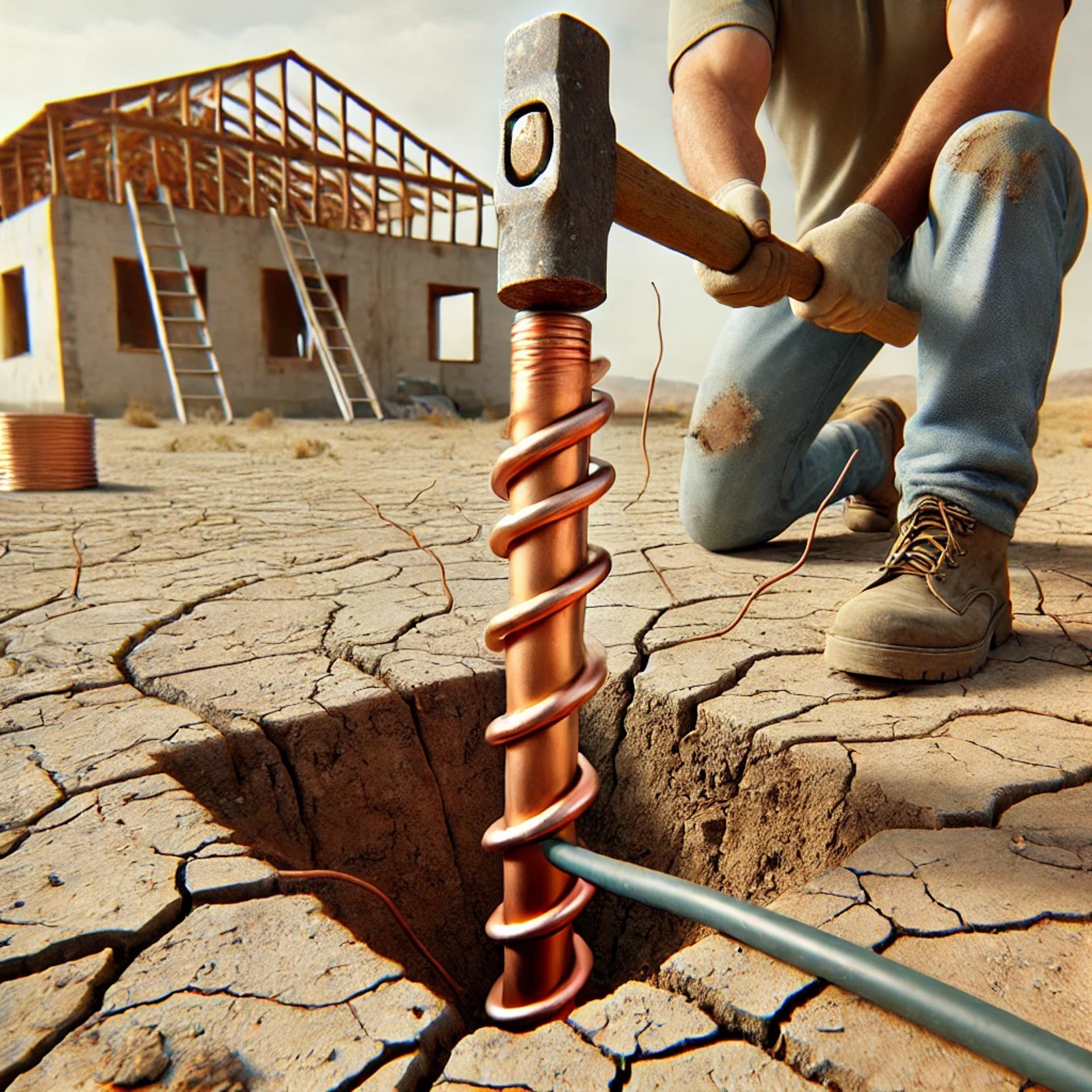
How to Install a Grounding Rod in Your Renovation
If you need to install or replace a grounding rod, follow this step-by-step guide. This is a job you can do yourself if you're confident with electrical work, but a qualified electrician may be required for final testing and certification.
ELECTRICAL
2/9/20251 min read


1. Choose the Right Grounding Rod
Material: Use a copper-bonded steel or solid copper rod (preferred for corrosion resistance).
Size: Standard 1.8m (6 feet) or 2.4m (8 feet) long, 12.5mm (½ inch) thick.
Grounding Wire: Use 10mm² or 16mm² green/yellow earth cable, depending on regulations and your system.
2. Find the Best Location for the Rod
Close to the Main Electrical Panel: Ideally, install it near where the electrical supply enters your house.
Soft, Moist Soil: Avoid dry, rocky areas; damp soil improves conductivity.
Away from Gas/Water Pipes: Maintain at least 2 meters clearance from underground utilities.
3. Drive the Grounding Rod into the Ground
Option 1: Use a Hammer Drill or Ground Rod Driver (Best option)
Dig a small hole (20–30 cm deep) to position the rod.
Use a hammer drill with a ground rod driver attachment to drive it vertically into the soil.
Option 2: Manual Installation with a Sledgehammer
Start the rod in the ground at a 90-degree angle (straight down).
Strike the top with a sledgehammer, keeping it as straight as possible.
Keep driving it down until only 10–15 cm (4–6 inches) are visible above ground.
If the ground is too hard, pour water to soften it or use a rotary drill with a masonry bit to make a starter hole.
4. Connect the Grounding Wire
Use a grounding clamp to attach the green/yellow earth wire securely to the rod.
Run the earth wire into your main electrical panel (consumer unit) and connect it to the earth bus bar.
5. Test the Ground Connection (Recommended by an Electrician)
Use an earth resistance tester to check if the resistance is below 100 ohms (lower is better).
If resistance is too high:
Add water around the rod.
Install a longer rod or use multiple rods spaced 2m apart.
6. Cover and Secure the Rod
You can bury the exposed rod or place a small inspection cover over it for easy maintenance.
Ensure all connections are tight and protected from corrosion.

